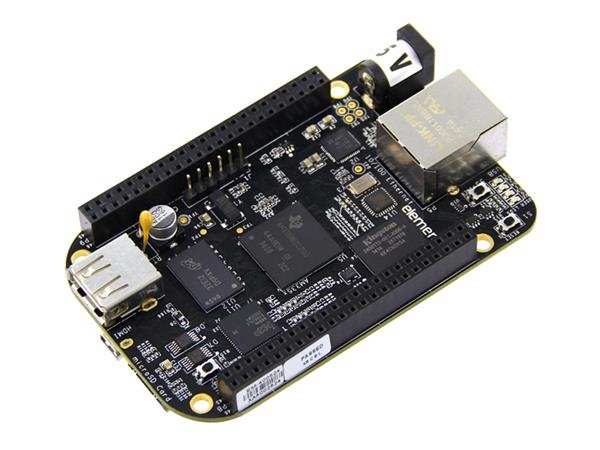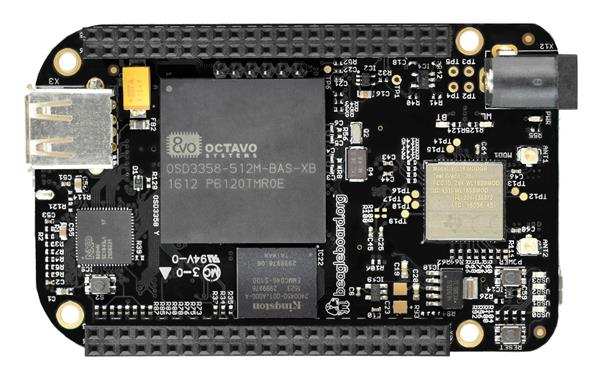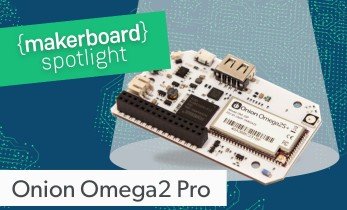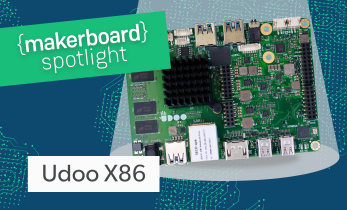BeagleBone Black Specs and More
There are loads of different maker boards on the market, from tiny single-board computers like the Raspberry Pi Zero to beefy artificial intelligence (AI) capable SBCs such as the NVIDIA Jetson Nano. The BeagleBoard BeagleBone Black is a great development board for a variety of purposes. It features good operating system (OS) support, ample processing power, and a reasonable price tag. But is one right for you? Learn all about the BeagleBone Black, from what it is to what it can do and if you should buy one!
What is the BeagleBone Black/BeagleBone Black Wireless?

The BeagleBone Black comes in two variants: The vanilla BeagleBone Black and its BeagleBone Wireless counterpart. At its core, you'll find an Octavo Systems OSD3358 1GHz ARM Cortex A8 processor paired with 512MB of DDR3 RAM. It features dual 46-pin GPIO (general purpose input/output) headers. There's a 4Gb 8-bit eMMC flash storage module and 3D graphics accelerator alongside a NEON floating-point accelerator. You'll find dual PRU 32-bit microcontrollers.

For connectivity, the BeagleBone Black sports a USB host, Ethernet jack, HDMI video output, and a USB client for power communications. It's capable of running Linux distributions (distros) such as Debian and Ubuntu, Android, the Cloud9 IDE (integrated development environment) on Node.js, and more. The BeacleBone Black Wireless swaps the 10/100 Ethernet jack for 802.11 b/g/n 2.4GHz Wi-Fi and Bluetooth.
BeagleBone Black vs. BeagleBone Black Wireless - What’s the Difference?
The BeagleBoard BeagleBone Black comes in two different iterations. While the standard BeagleBone Black sports a 10/100 Ethernet jack, the BeagleBone Black Wireless variant flaunts Wi-Fi and Bluetooth.
BeagleBone Black Specs:
- Octavo Systems OSD3358 1GHz ARM AM3358 ARM Cortex-A8
- 512MB DDR3 RAM
- Storage: eMMC module, microSD card slot
- 10/100 Ethernet jack
- micro HDMI
- Interfaces: 2 x 46-pin GPIO - 4x UART, 12x PWM/Timers, LCD, GPMC, MMC1, 2x SPI, 2x I2C, A/D Converter, 2x CAN Bus (w/o PHY)
- mini-AB USB 2.0 client port, Type-A USB 2.0 host port
BeagleBone Black Wireless Specs:
- Octavo Systems OSD3358 1GHz ARM AM3358 ARM Cortex-A8
- 512MB DDR3 RAM
- Storage: eMMC module, microSD card slot
- 802.11 a/b/g Wi-Fi, Bluetooth wireless
- micro HDMI
- Interfaces: 2 x 46-pin GPIO - 4x UART, 12x PWM/Timers, LCD, GPMC, MMC1, 2x SPI, 2x I2C, A/D Converter, 2x CAN Bus (w/o PHY)
- mini-AB USB 2.0 client port, Type-A USB 2.0 host port
What OSes can the BeagleBone Black Run?
BeagleBoard's BeagleBone Black can run a variety of operating systems. Like most SBCs, the BeagleBone Black remains compatible with various Linux operating systems such as Debian and Ubuntu. Additionally, you'll find an Android installer for the BeagleBone Black. As such, it's a good board for a variety of different uses, from Internet of Things projects to digital signage.
BeagleBone Black-compatible OSes:
- Linux (i.e. Debian, Ubuntu)
- Android
What Projects can the BeagleBone Black be Used for?
With its solid specs, the BeagleBone Black is a fantastic maker board for many applications. Because of its combination of low power draw, decent processing power, and excellent connectivity, the BeagleBone Black may be used as the backbone of tons of projects. Notably, it's stellar for Internet of THings and embedded device builds.
BeagleBone Black-powered smart home automation works well. For smart gardening, a cloud-hosted intelligent sprinkler system that's built with a BeagleBone Black provides connected agriculture capabilities. Smart mirrors may be cobbled together with a BeagleBone Black at the center.
In addition to IoT projects, you can use a BeagleBone Black for audio projects. You can stream video on the BeagleBone Black, play retro games, and deploy any number of entertainment projects. And with Android support, the BeagleBone Black is a good choice for digital signage as well.
What projects can you make with the BeagleBone Black?
- IoT projects
- Digital signage
- Audio projects
- Entertainment DIY projects
- ...and more!
Who is the BeagleBone Black for?
The BeagleBone Black is an awesome SBC. It's affordable, energy-efficient, and reasonably powerful. Phenomenal I/O as well as great expansion with BeagleBoard capes makes it a good overall single-board computer. DIYers interested in IoT projects such as building smart home devices should definitely consider the BeagleBone Black.
With a small footprint, the BeagleBoneBlack works flawlessly for embedded device builds. And digital signage works well on account of its Android image.
Best for: DIYers and makers seeking an energy-efficient SBC with great connectivity that's affordable and versatile.
The Competition - BeagleBone Black vs. Raspberry Pi and Other SBCs
While the BeagleBone Black is a worthy addition to any maker space, there are loads of SBCs on the market. So how does the BeagleBone Black compare to other popular single-board computers? The Raspberry Pi 4 offers more processing power and RAM for about the same price. Capable of tackling everything from smart home projects to home entertainment and gaming, artificial intelligence projects, and basic desktop use, the Raspberry Pi 4 is the best SBC for most people. While the BeagleBone Black may have slightly better I/O with its dual 46-pin GPIO headers and phenomenal expansion via BeagleBoard capes, the Raspberry Pi is a better value.
For a small, cheap board, the Raspberry Pi 0 and 0 W are good picks. Both clock in at super affordable price points, boast top-notch usability, and are excellent for maker projects. The BeagleBone Black is a bit more robust, but the Raspberry Pi Zero and Zero W are still solid choices.
If you need something super small, the PocketBeagle from BeagleBoard is awesome. It sports a microSD card slot, micro-USB port, and retails for around $28 USD. The onboard Octavo Systems OSD3358 1 GHz ARM Cortex-A8 and integrated 512 MB DDR3 RAM fit neatly in a tiny 56 x 35 mm footprint.
Final Thoughts
Ultimately, the BeagleBoard BeagleBone Black is a fantastic dev board that delivers great specs and fantastic I/O in a small form factor. With Linux and Android support, the BeagleBone Black is equally capable for IoT projects such as building DIY smart home devices and digital signage projects. While it's not quite as beefy as the flagship SBC the Raspberry Pi 4, the BeagleBone Black will more than satisfy makers seeking a single-board computer for Internet of Things, digital signage, or embedded device applications.
Your turn: Which SBCs do you recommend?












































Leave your feedback...